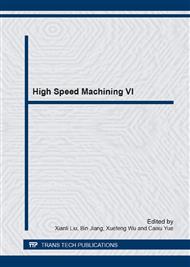p.559
p.564
p.571
p.576
p.580
p.585
p.590
p.596
p.601
Research on Surface Roughness of Slender Shaft in Ultrasonic Vibration Turning
Abstract:
According to the principle of ultrasonic vibration turning, the first step is to study different position changes of surface roughness with cutting parameters under ultrasonic vibration turning of slender shaft by the test of single factor, and determining the extreme position of surface roughness with the slender shaft changes in different cutting conditions. The second step is to study the influence of cutting parameters on the overall average surface roughness of work piece under ultrasonic vibration turning of slender shaft by orthogonal test design, and compared with the conventional turning. The experimental results show that ultrasonic vibration turning slender shaft processing can significantly improve the surface roughness. At the same time, the influence laws of cutting parameters on the surface roughness are investigated, and finding out the optimal cutting experimental parameters. Key words: slender shaft; ultrasonic vibration turning; surface roughness; orthogonal test design.
Info:
Periodical:
Pages:
580-584
Citation:
Online since:
July 2014
Authors:
Price:
Сopyright:
© 2014 Trans Tech Publications Ltd. All Rights Reserved
Share:
Citation:


